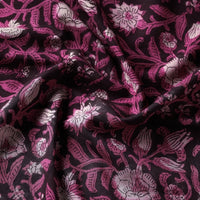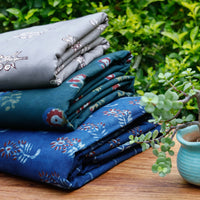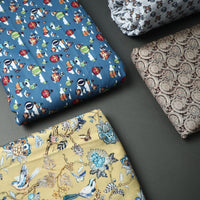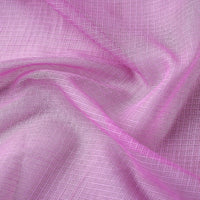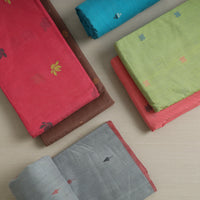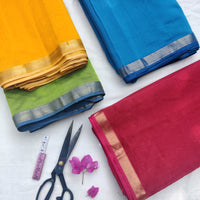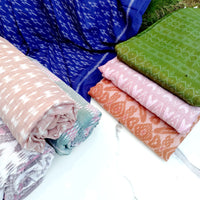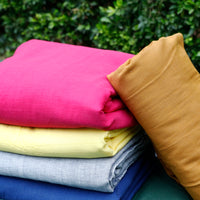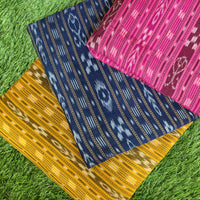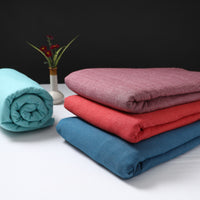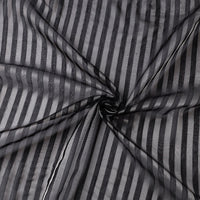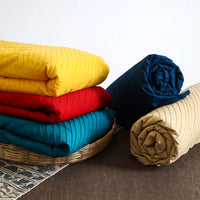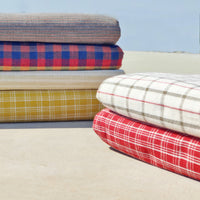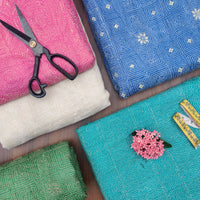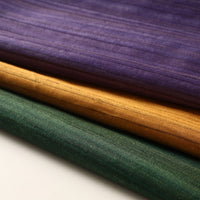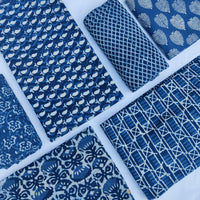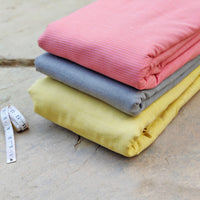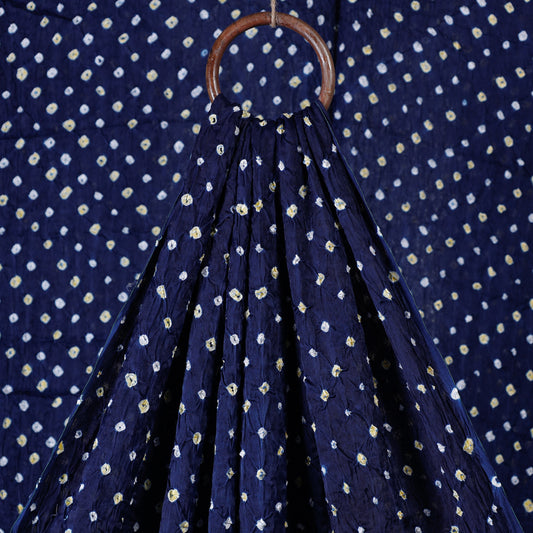The Legacy of Bandhani: A Timeless Craft from the Heart of India
Introduction to Bandhani: An Age-Old Tradition
Bandhani, also known as Bandhej, is a traditional Indian textile art that has been practiced for over 5,000 years. Originating from the western states of Gujarat and Rajasthan, this intricate tie-dye technique is deeply rooted in Indian culture and history. Each piece of Bandhani fabric is a testament to the rich heritage of the regions that produce it, embodying the skill, patience, and creativity of the artisans who create these stunning textiles.
Bandhani is more than just a craft; it is a cultural legacy passed down through generations, symbolizing the deep connection between the artisans and their land. The practice of Bandhani is often a family affair, with techniques and patterns inherited from ancestors, ensuring that the craft remains alive and vibrant. The intricate designs, vibrant colors, and unique patterns of Bandhani make it a sought-after fabric for those who appreciate the beauty of handmade products.
The Regions and Communities Behind Bandhani
Bandhani's origins are primarily traced to Gujarat and Rajasthan, two states in western India known for their rich cultural heritage and artisanal crafts. In Gujarat, the cities of Jamnagar, Bhuj, and Rajkot are renowned for their Bandhani production. In Rajasthan, Bandhani is predominantly produced in the regions of Jaipur, Jodhpur, and Udaipur.
Gujarat: The Cradle of Bandhani
Gujarat, often referred to as the "Jewel of Western India," is home to some of the most skilled Bandhani artisans. The Khatri community, in particular, has been associated with this craft for centuries. The Khatris are master dyers who have perfected the art of Bandhani, passing down their knowledge through generations. The Khatri women meticulously tie the fabric, while the men handle the dyeing process, creating vibrant patterns that are unique to each family.
Rajasthan: The Land of Royalty and Rich Textiles
Rajasthan, known for its royal heritage and colorful festivals, is another significant hub for Bandhani. The Bandhani produced in Rajasthan is often characterized by its use of bright, bold colors and intricate patterns that reflect the state's opulent history. The artisans of Rajasthan, much like those in Gujarat, have inherited this craft from their ancestors, ensuring that the tradition continues to thrive.
The Community Impact: Preserving a Way of Life
The production of Bandhani is not just about creating beautiful textiles; it is about sustaining communities and preserving a way of life. For many artisans, Bandhani is their primary source of income, and the continuation of this craft is vital to their livelihoods. iTokri recognizes the importance of supporting these communities and is committed to providing a platform that connects artisans directly with consumers. By purchasing Bandhani from iTokri, you are not just buying a piece of fabric; you are supporting the preservation of a cultural tradition and the artisans who keep it alive.
The Process of Creating Bandhani: A Labor of Love
The creation of Bandhani is an intricate process that requires both skill and patience. It begins with selecting high-quality fabric, typically cotton or silk, which is then meticulously tied using thread to create resist patterns. These tied areas prevent the dye from reaching certain parts of the fabric, resulting in the distinctive Bandhani patterns.
1. Tying the Fabric: The tying process, known as "Bandh," is the most critical step in creating Bandhani. Artisans use their fingers to pinch the fabric and tie it with thread, creating small resist areas. The patterns can range from simple dots to complex motifs, depending on the skill of the artisan. The tying is done with such precision that the resulting designs are often symmetrical and intricate.
2. Dyeing the Fabric: Once the fabric is tied, it is dipped into dye vats. The dyeing process may be repeated multiple times, with the fabric being tied and untied in between each dyeing to create multi-colored patterns. Natural dyes, derived from plants and minerals, are traditionally used, making Bandhani an eco-friendly fabric.
3. Drying and Untying: After dyeing, the fabric is dried in the sun. Once dry, the ties are carefully removed, revealing the intricate patterns created by the resist technique. The fabric is then washed and ironed, ready to be transformed into beautiful garments and accessories.
The Cultural and Symbolic Significance of Bandhani
Bandhani is not just a fabric; it is a symbol of cultural identity, tradition, and celebration. In many parts of India, Bandhani is worn during significant life events, such as weddings and festivals. The patterns and colors of Bandhani often carry symbolic meanings—red for marriage, yellow for happiness, and black for auspiciousness.
Weddings and Festivals: The Role of Bandhani
In Gujarat and Rajasthan, Bandhani sarees and dupattas are considered essential attire for weddings. Brides often wear red Bandhani sarees as part of their wedding trousseau, symbolizing fertility and prosperity. During festivals such as Navratri and Diwali, women adorn themselves in colorful Bandhani outfits, celebrating the joy and vibrancy of Indian culture.
Spiritual and Religious Significance
Bandhani also holds spiritual significance in Hinduism. It is often used in religious ceremonies and rituals, with specific patterns and colors chosen for their auspiciousness. For example, yellow Bandhani is commonly worn during religious festivals, as it is associated with spirituality and devotion.
iTokri: A Beacon of Authenticity and Cultural Preservation
At iTokri, we are more than just a marketplace; we are a platform dedicated to preserving and celebrating India’s rich cultural heritage. Our commitment to authenticity, sustainability, and community engagement sets us apart in the global marketplace for handcrafted goods.
Supporting Artisans and Ethical Practices
iTokri partners directly with over 500 artisan groups across India, including those who specialize in Bandhani. By cutting out intermediaries, we ensure that artisans receive fair compensation for their work. This direct partnership model not only supports the artisans financially but also helps in preserving the traditional crafts that are integral to India’s cultural identity.
Sustainability at the Core
Sustainability is at the heart of iTokri’s operations. We are committed to using eco-friendly materials and processes in every aspect of our business. From the use of natural dyes in Bandhani fabrics to recycled materials in our packaging, we strive to minimize our environmental impact. By choosing iTokri, you are not only supporting traditional crafts but also making a conscious choice for the planet.
Building a Community of Craft Lovers
iTokri is more than just a place to shop; it’s a community. We believe in the power of storytelling to connect people with the products they buy. Every item on our platform comes with a story—about the artisan who made it, the tradition it represents, and the impact your purchase has on their life. We regularly host events and workshops that bring our customers closer to the artisans and the crafts they love, fostering a deeper connection and understanding of India’s rich cultural heritage.
Human Stories: The People Behind Bandhani
Behind every piece of Bandhani fabric is a story of dedication, craftsmanship, and resilience. These stories are what make Bandhani truly special.
The Khatris of Gujarat: Guardians of Bandhani
Take, for example, the Khatri community of Bhuj in Gujarat. This small, close-knit community has been practicing Bandhani for generations. The Khatris take immense pride in their work, viewing it as not just a craft but a way of life. Despite the challenges posed by modernity and industrialization, they have remained steadfast in their commitment to preserving the traditional methods of Bandhani production.
One such artisan is Rameshbhai, a master dyer from Bhuj who has been practicing Bandhani for over 40 years. Rameshbhai learned the craft from his father, who in turn learned it from his father. Today, he works alongside his wife and children, ensuring that the knowledge of Bandhani continues to be passed down through the generations. Rameshbhai’s story is one of many that highlight the importance of supporting traditional crafts and the people who keep them alive.
The Women of Rajasthan: Weaving Stories of Strength
In Rajasthan, Bandhani is often a women-led craft. In villages across the state, groups of women come together to tie and dye fabrics, balancing their work with household responsibilities. For many of these women, Bandhani is not just a source of income but also a means of empowerment. By practicing this craft, they gain financial independence and the ability to contribute to their family’s well-being.
One inspiring story is that of Sunita Devi, a Bandhani artisan from Jodhpur. Sunita began learning the craft at a young age, guided by her mother and grandmother. Today, she is a leader in her community, teaching Bandhani to other women and helping them achieve financial independence. Sunita’s work with Bandhani has not only transformed her life but also the lives of many others in her village.
The Future of Bandhani: Preserving Tradition in a Modern World
As we move into an increasingly digital and globalized world, the future of traditional crafts like Bandhani hangs in the balance. While the demand for handmade, authentic products remains strong, artisans face numerous challenges, from competition with mass-produced goods to the loss of traditional knowledge.
iTokri’s Role in Securing the Future
iTokri is committed to securing the future of Bandhani and other traditional crafts. Through our platform, we provide artisans with access to a global market, ensuring that their skills and knowledge are valued and appreciated. We also invest in training and development programs that help artisans adapt to changing market demands while staying true to their roots.
Thanks for reading this through till now :)
Hi, my name is Nitin and i am one of the founders of iTokri with Jia :)
We have been doing fabrics online since 2012, its more than a decade now!
Fabrics have has been our top selling category since inception, we have worked hard over the years to build this huge catalog of most authentic fabrics from all across the Indian crafts landscape.
I have personally travelled to most rural parts of North, south, western and eastern India, to find the best produced artisanal fabrics for craft lovers like yourself. We thrive and survive on super support of generation who loves to contribute to the ecosystem of Artisanal products.
No matter how much we try to add to the fabrics catalog there is still so much new to bring to you everyday! Thats what keeps us excited about what we do at iTokri.
If you want to explore all the fabrics at iTokri, Please visit this link " here "
We would also like you to take a look at our other textile product categories like Sarees, Dupattas, Stoles, Dress Materials and Blouses.
We also started creating exclusive garments with an inhouse brand "ITOKRI CASUALS", i would like like to welcome you to explore our Kurtas, Suit Sets, Dresses, Co-ord Sets, Night Suits and much more.
You should also check our non textile crafts in Home Decor, Stationery, Bags, and Jewellery.
We have created a dedicated landing page for all the crafts we have on iTokri here - CRAFTS OF INDIA
If you wish to directly reach out to me, you can drop me an email on nitin@itokri.com and i shall be happy to respond to you :)
While you go ahead reading the content below, I wish you a happy browsing at iTokri!
FAQ: Understanding Bandhani Fabrics
1. What is Bandhani Fabric?
Answer:
Bandhani fabric, also known as Bandhej, is a traditional Indian tie-dye technique that involves tightly tying small portions of fabric with thread before dyeing. This process creates intricate patterns such as dots, waves, and squares on the fabric. Originating from Gujarat and Rajasthan, Bandhani is known for its vibrant colors and rich cultural significance. Each piece is unique, as the patterns are meticulously handcrafted by skilled artisans.
2. How is Bandhani Fabric Made?
Answer:
The creation of Bandhani fabric is a labor-intensive process that starts with selecting high-quality cotton, silk, or other fabrics. Artisans then tie small sections of the fabric with thread, forming tiny knots. These knotted sections resist the dye when the fabric is immersed in vibrant color baths. After dyeing, the knots are carefully untied, revealing the beautiful, patterned designs. The entire process can take several days to complete, depending on the complexity of the design and the fabric used.
3. What Are the Different Types of Bandhani Fabric?
Answer:
Bandhani fabric comes in various types, primarily distinguished by the fabric used and the patterns created:
-
Cotton Bandhani: Lightweight and breathable, perfect for everyday wear.
-
Silk Bandhani: Luxurious and glossy, ideal for special occasions.
-
Georgette Bandhani: Known for its flowing drape, often used in sarees and dupattas.
-
Bandhani Sarees: Traditional sarees featuring Bandhani patterns, popular for weddings and festivals.
-
Bandhani Dupattas: Versatile accessories that can enhance any outfit.
Each type has its own unique appeal, catering to different preferences and occasions.
4. Why is Bandhani Fabric So Popular?
Answer:
Bandhani fabric is highly popular due to its unique patterns, vibrant colors, and cultural significance. It is often worn during special occasions like weddings and festivals, symbolizing good fortune and prosperity. The intricate craftsmanship involved in creating each piece adds to its exclusivity and appeal. Additionally, Bandhani is valued for its comfort, especially when made from cotton, and its elegance when crafted from silk. The fabric’s versatility, whether in sarees, dupattas, or dress materials, makes it a favorite among fashion enthusiasts.
5. How Do I Identify Genuine Bandhani Fabric?
Answer:
Authentic Bandhani fabric can be identified by its unique, irregular patterns, as each piece is handcrafted and no two are exactly alike. Look for the following characteristics:
-
Knot Marks: Genuine Bandhani will have visible knot marks where the fabric was tied during the dyeing process.
-
Color Variations: Slight variations in color are common and a sign of hand-dyeing.
-
Texture: Authentic Bandhani often has a slightly uneven texture due to the tying and dyeing process.
-
Artisan's Signature: Some pieces may include a signature or mark from the artisan, adding to their authenticity.
Purchasing from reputable sources like iTokri ensures that you are getting genuine, handcrafted Bandhani fabric.
6. How Should I Care for My Bandhani Fabric?
Answer:
Caring for Bandhani fabric requires special attention to preserve its vibrant colors and intricate patterns:
-
Cotton Bandhani: Hand wash in cold water with a mild detergent. Avoid wringing the fabric; instead, gently squeeze out the water and dry it in the shade to prevent fading.
-
Silk Bandhani: It’s best to dry clean silk Bandhani to maintain its sheen and texture. If washing at home, use a gentle detergent and cold water.
-
Storage: Store Bandhani fabric in a cool, dry place, preferably wrapped in a muslin cloth to protect it from moisture and light.
Proper care will ensure that your Bandhani fabric remains beautiful and durable for years to come.
7. What Occasions Are Best for Wearing Bandhani Fabric?
Answer:
Bandhani fabric is incredibly versatile and can be worn for various occasions:
-
Weddings and Festivals: Bandhani sarees and dupattas are traditional attire for weddings and festivals, symbolizing celebration and joy.
-
Casual Wear: Cotton Bandhani fabrics are perfect for everyday wear, offering comfort and style.
-
Formal Events: Silk Bandhani adds a touch of elegance to formal events, making it a popular choice for parties and cultural gatherings.
No matter the occasion, Bandhani fabric brings a unique blend of tradition and style to your wardrobe.
8. How Does Bandhani Contribute to Sustainable Fashion?
Answer:
Bandhani fabric is a sustainable choice in several ways:
-
Eco-Friendly Dyeing: Many Bandhani fabrics are dyed using natural, non-toxic dyes that are less harmful to the environment.
-
Handcrafted Process: The tie-dye process is manual, requiring minimal machinery, which reduces energy consumption.
-
Support for Artisans: Purchasing Bandhani fabric supports local artisans, helping to sustain traditional crafts and communities.
By choosing Bandhani, you are not only embracing a piece of Indian heritage but also contributing to a more sustainable fashion industry.
9. Where Can I Buy Authentic Bandhani Fabric?
Answer:
You can purchase authentic Bandhani fabric from trusted sources that work directly with artisans. iTokri is one such platform, offering a wide range of Bandhani fabrics, including sarees, dupattas, and dress materials. Each piece is handcrafted by skilled artisans, ensuring authenticity and quality. Shopping at iTokri also means you are directly supporting the artisans who create these beautiful works of art.
10. What Makes Bandhani Fabric Unique Compared to Other Fabrics?
Answer:
Bandhani fabric stands out due to its intricate tie-dye patterns, cultural significance, and the skill required to create each piece. Unlike machine-made fabrics, Bandhani is entirely handcrafted, making every piece unique. The fabric's history, rooted in ancient Indian traditions, adds to its charm and appeal. Additionally, the use of natural dyes and eco-friendly practices in its production makes Bandhani a conscious choice for those who value sustainability and authenticity.
We would love to show you our elaborated and exclusive Handmade Fabrics Library :)
Our Bestsellers other than Bandhanis you saw above: Ajrakh Fabrics, Sanganeri Block Printed Fabrics, Pochampally Ikat Fabrics, Kalamkari Hand Block Printed Fabrics, Hand Printed Batik Fabrics, Hand Block Printed Fabrics, Jacquard Weave Fabrics, Chanderi Weaving Fabrics, Pure Cotton Fabrics
Check All Fabrics Collection " here"
बांधनी की धरोहर: भारत के दिल से एक कालातीत शिल्प
बांधनी का परिचय: एक प्राचीन परंपरा
बांधनी, जिसे बंधेज के नाम से भी जाना जाता है, एक पारंपरिक भारतीय वस्त्र कला है, जो लगभग 5,000 वर्षों से प्रचलित है। यह शिल्प मुख्य रूप से गुजरात और राजस्थान के पश्चिमी राज्यों में उत्पन्न हुआ और आज भी भारतीय संस्कृति और इतिहास का अभिन्न अंग बना हुआ है। हर बांधनी कपड़ा एक अद्वितीय रचना होती है, जो कलाकारों के कौशल, धैर्य और रचनात्मकता को दर्शाता है।
बांधनी के पीछे के क्षेत्र और समुदाय
गुजरात और राजस्थान बांधनी के प्रमुख केंद्र हैं। गुजरात के जामनगर, भुज, और राजकोट तथा राजस्थान के जयपुर, जोधपुर, और उदयपुर जैसे शहर इस कला के लिए प्रसिद्ध हैं। गुजरात में खत्री समुदाय इस शिल्प से सदियों से जुड़ा हुआ है, जहां महिलाएं कपड़े बांधती हैं और पुरुष इसे रंगते हैं। राजस्थान में बांधनी का निर्माण रंगीन और जटिल पैटर्न के साथ किया जाता है, जो राज्य की समृद्ध सांस्कृतिक धरोहर को दर्शाता है।
बांधनी बनाने की प्रक्रिया
बांधनी बनाने की प्रक्रिया में उच्च गुणवत्ता वाले कपड़े का चयन किया जाता है, जिसे धागे से बांधा जाता है ताकि रंग वहां न पहुंचे। फिर इसे प्राकृतिक रंगों में डुबोया जाता है और सूखने के बाद धागे हटाए जाते हैं, जिससे अद्वितीय पैटर्न उभरते हैं।
बांधनी का सांस्कृतिक और प्रतीकात्मक महत्व
बांधनी सिर्फ एक कपड़ा नहीं है, यह सांस्कृतिक पहचान, परंपरा और उत्सव का प्रतीक है। इसे शादियों और त्योहारों के दौरान पहना जाता है, जहां इसका रंग और पैटर्न विशेष रूप से महत्वपूर्ण होता है।
iTokri: प्रामाणिकता और सांस्कृतिक संरक्षण का प्रतीक
iTokri एक ऐसा मंच है जो भारत की सांस्कृतिक धरोहर को संरक्षित करने के लिए प्रतिबद्ध है। यह मंच कलाकारों से सीधे जुड़कर उन्हें उचित मुआवजा दिलाने और पारंपरिक शिल्पों को जीवित रखने में सहायता करता है। iTokri के माध्यम से बांधनी की खरीदारी करना केवल कपड़ा खरीदना नहीं है, बल्कि एक सांस्कृतिक परंपरा और इसे जीवित रखने वाले कलाकारों का समर्थन करना है।
This content has been thoughtfully generated with some help of AI tools available on the web and properly moderated with expert inputs to make it authentic and reader friendly. bahut jyada mehnat lagti hai usme bhi :)
The purpose of the content is to help you understand the product, its source and the people working behind it... and also the history and legacy of Indian craftsmanship. Its little detailed but i am sure worth the read if you have reached here already!
If you think that this content is helpful, do share your feedback on whatsapp
by clicking
" here " or write to us
on the dedicated email id :
content@itokri.com :)
If you don't find it helpful, we would love to hear some feedback from you and shall improve on our content generation strategy for sure.
The primary goal of iTokri is to enrich your learning around crafts and authentic products our beautiful country makes!

















